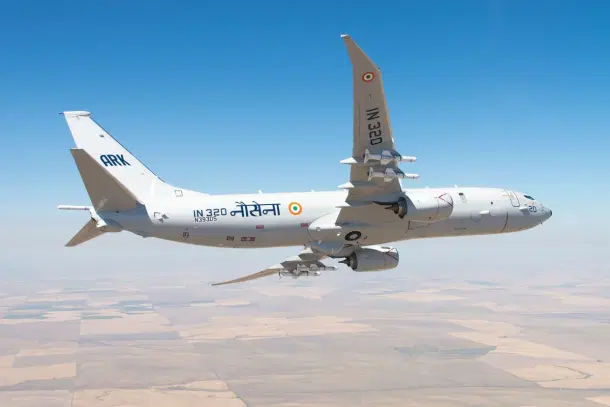News Brief
Javelin Missiles, Stryker Vehicles, P-8I Aircraft, Counter-Drone Systems And More: Key Defence Takeaways From India-US Joint Statement
Kuldeep Negi
Feb 14, 2025, 11:36 AM | Updated 11:36 AM IST
Save & read from anywhere!
Bookmark stories for easy access on any device or the Swarajya app.


Prime Minister Narendra Modi and United States President Donald Trump have reaffirmed their commitment to an expanded India-US defence partnership, announcing a series of agreements to strengthen military cooperation during PM Modi’s official visit to Washington.
A New Defence Framework for the 21st Century
The two leaders unveiled plans for a new ten-year Framework for the U.S.-India Major Defence Partnership, aimed at enhancing military collaboration across multiple domains.
The agreement, set to be signed this year, reflects the growing strategic alignment between the two nations, with a focus on defence technology cooperation, interoperability, and joint production.
Advancing Defence Trade and Co-Production
President Trump and Prime Minister Modi welcomed the increasing integration of US defence equipment into India's military arsenal, citing acquisitions such as C-130J Super Hercules, C-17 Globemaster III, P-8I Poseidon aircraft, CH-47F Chinook, MH-60R Seahawk, AH-64E Apache helicopters, Harpoon anti-ship missiles, M777 howitzers, and MQ-9B drones.
The leaders announced new initiatives to expand defence sales and co-production, specifically highlighting plans to procure and locally manufacture Javelin Anti-Tank Guided Missiles and Stryker Infantry Combat Vehicles in India.
Additionally, they confirmed progress toward India's acquisition of six additional P-8I Maritime Patrol aircraft, bolstering surveillance capabilities in the Indian Ocean.
Regulatory Reforms to Streamline Defence Trade
Recognising India's Major Defence Partner status and Strategic Trade Authorization-1 (STA-1) designation, the US and India committed to reviewing arms transfer regulations, including the International Traffic in Arms Regulations (ITAR).
These reforms aim to streamline defence trade, technology transfer, and maintenance of U.S.-provided systems in India.
Both sides also agreed to open negotiations for a Reciprocal Defence Procurement (RDP) agreement, aligning procurement systems to enable a two-way supply of defence goods and services.
Strengthening Technology Collaboration
The leaders announced a major push toward defence technology innovation, launching the Autonomous Systems Industry Alliance (ASIA) to enhance partnerships in autonomous military systems.
A new collaboration between Anduril Industries and Mahindra Group will focus on AI-enabled counter-drone technologies and advanced maritime systems, while L3 Harris and Bharat Electronics will co-develop active towed array sonar systems.
Additionally, the US pledged to review its policy on releasing fifth-generation fighter jets and advanced undersea technologies to India, signalling deeper trust in India’s defence capabilities.
Expanding Military Exercises and Joint Operations
Military cooperation between the two nations is set to reach new heights, with expanded joint training, exercises, and interoperability programmes.
The leaders welcomed the next edition of "Tiger Triumph," a tri-service military exercise, which will take place in India with larger scale and complexity.
In a strategic shift, both nations committed to supporting overseas deployments of their militaries in the Indo-Pacific region, with enhanced logistics, intelligence sharing, and joint force mobility for humanitarian and disaster relief operations.
Kuldeep is Senior Editor (Newsroom) at Swarajya. He tweets at @kaydnegi.





